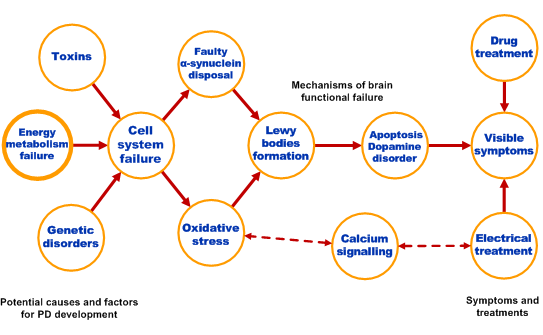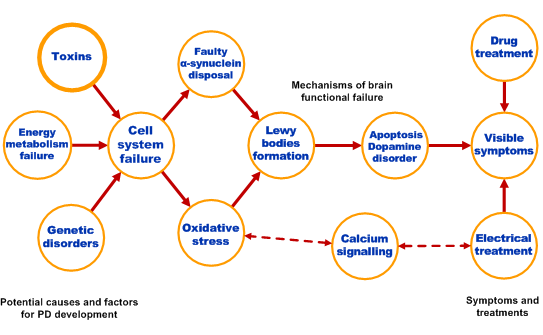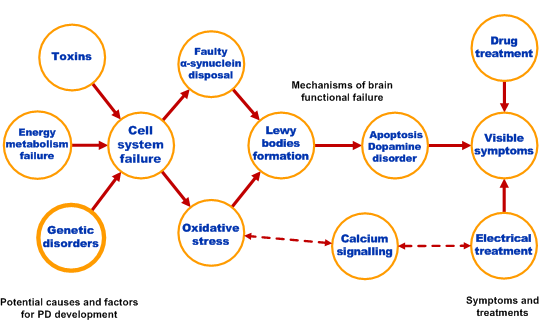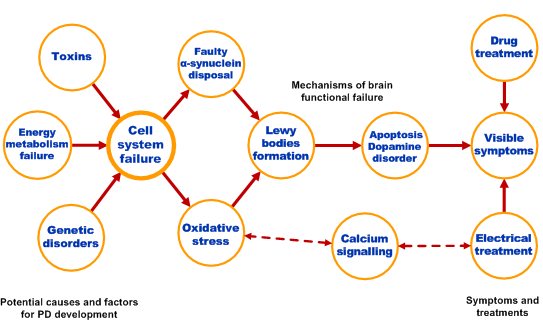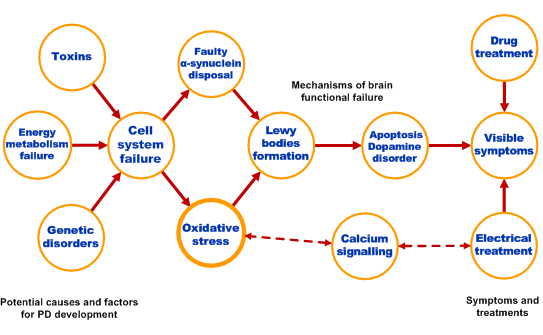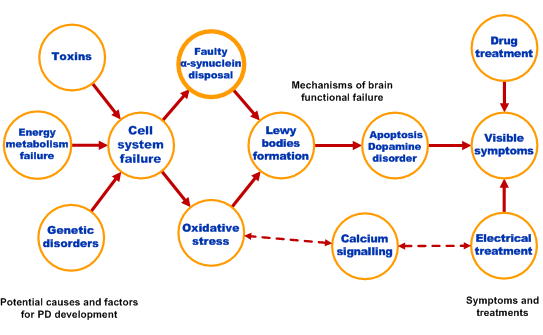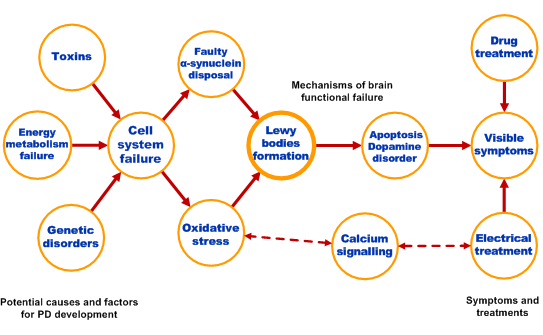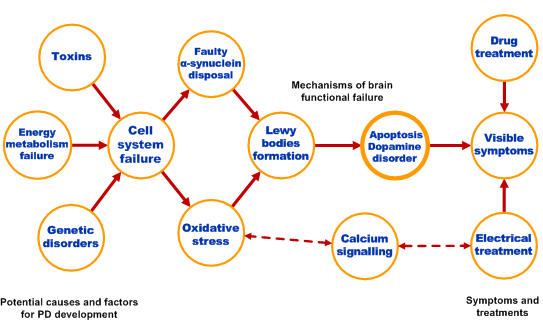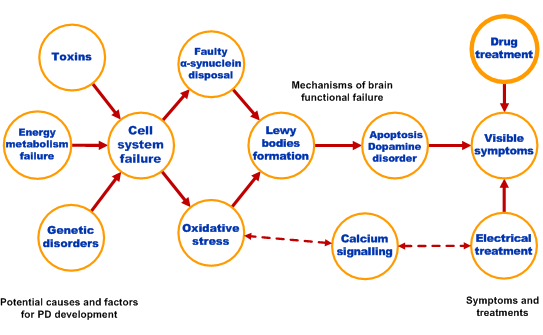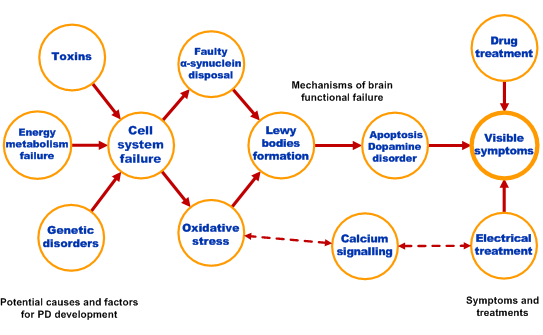Diagram of the Systems of Parkinson's disease
(click in the designated areas for further information)
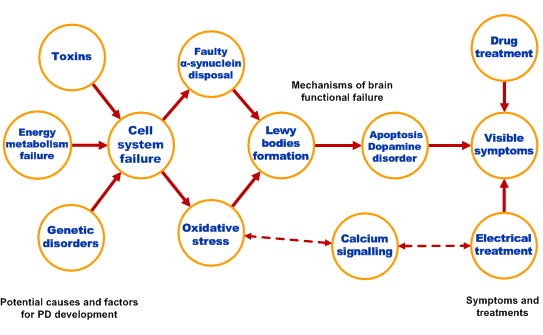
Cell system failure
Overview Parkinson’s disease is a multi-factor, complex disease. As is apparent from the ‘upstream’ factors (toxins, genes and energy metabolism), an integration of many mechanisms and cellular processes will be required to explain how PD can develop and slowly drive a normally functioning healthy organism to ‘unhealthy’ conditions where α-synculein is accumulated into Lewy bodies. The complexity of Parkinson’s disease development mechanisms thus requires an integrative approach to link together all the subcellular, cellular and cerebral systems. The Systems approach presented here thus consider the relevant subsystems and aims to show how their failures can lead to disease development. These systems are:
The Systems of Parkinson’s disease approach thus aims at building comprehensive models and methods to integrate scientific knowledge in order to better understand how a failure or a combination of failure can lead to disease development. Further details on the actual works on the specific systems are found in the relevant research subsections. [Top] |

